A pen tester has extracted a database name by using a blind SQL injection. Now he begins to test the table inside the database using the below query and finds the table:
IF (LEN(SELECT TOP 1 NAME from sysobjects where xtype='U')=3) WAITFOR DELAY '00:00:10'--
spx?id=1; IF (ASCII(lower(substring((SELECT TOP 1 NAME from sysobjects where xtype=char(85)),1,1)))=101) WAITFOR DELAY '00:00:10'--
IF (ASCII(lower(substring((SELECT TOP 1 NAME from sysobjects where xtype=char(85)),2,1)))=109) WAITFOR DELAY '00:00:10'--
IF (ASCII(lower(substring((SELECT TOP 1 NAME from sysobjects where xtype=char(85)),3,1)))=112) WAITFOR DELAY '00:00:10'—
What is the table name?
Identify the person who will lead the penetration-testing project and be the client point of contact.
What is a good security method to prevent unauthorized users from "tailgating"?
The first phase of the penetration testing plan is to develop the scope of the project in consultation with the client. Pen testing test components depend on the client’s operating environment, threat perception, security and compliance requirements, ROE, and budget.
Various components need to be considered for testing while developing the scope of the project.
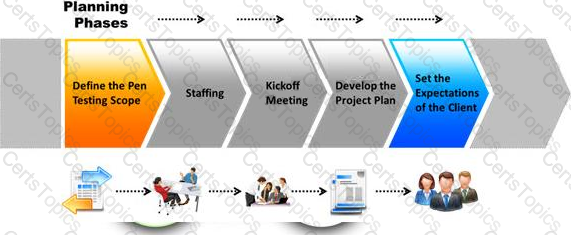
Which of the following is NOT a pen testing component to be tested?
Identify the type of authentication mechanism represented below:
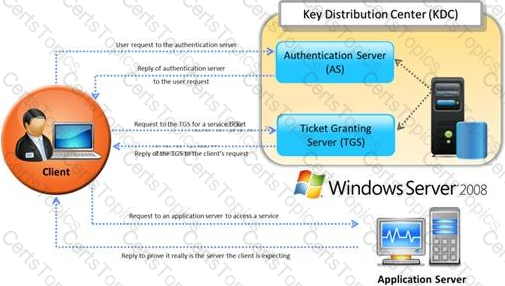
Frank is working on a vulnerability assessment for a company on the West coast. The company hired Frank to assess its network security through scanning, pen tests, and vulnerability assessments. After discovering numerous known vulnerabilities detected by a temporary IDS he set up, he notices a number of items that show up as unknown but questionable in the logs.
He looks up the behavior on the Internet, but cannot find anything related. What organization should Frank submit the log to find out if it is a new vulnerability or not?
What does ICMP Type 3/Code 13 mean?
A framework for security analysis is composed of a set of instructions, assumptions, and limitations to analyze and solve security concerns and develop threat free applications.
Which of the following frameworks helps an organization in the evaluation of the company’s information security with that of the industrial standards?
The IP protocol was designed for use on a wide variety of transmission links. Although the maximum length of an IP datagram is 64K, most transmission links enforce a smaller maximum packet length limit, called a MTU.
The value of the MTU depends on the type of the transmission link. The design of IP accommodates MTU differences by allowing routers to fragment IP datagrams as necessary. The receiving station is responsible for reassembling the fragments back into the original full size IP datagram.
IP fragmentation involves breaking a datagram into a number of pieces that can be reassembled later. The IP source, destination, identification, total length, and fragment offset fields in the IP header, are used for IP fragmentation and reassembly.
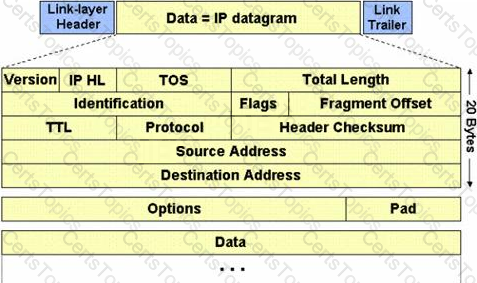
The fragment offset is 13 bits and indicates where a fragment belongs in the original IP datagram. This value is a:
Which one of the following Snort logger mode commands is associated to run a binary log file through Snort in sniffer mode to dump the packets to the screen?
What is kept in the following directory? HKLM\SECURITY\Policy\Secrets
Which vulnerability assessment phase describes the scope of the assessment, identifies and ranks the critical assets, and creates proper information protection procedures such as effective planning, scheduling, coordination, and logistics?
Which one of the following log analysis tools is used for analyzing the server’s log files?
Which of the following policy forbids everything with strict restrictions on all usage of the company systems and network?
Which one of the following is a command line tool used for capturing data from the live network and copying those packets to a file?
You just passed your ECSA exam and are about to start your first consulting job running security audits for a financial institution in Los Angeles. The IT manager of the company you will be working for tries to see if you remember your ECSA class. He asks about the methodology you will be using to test the company's network.
How would you answer?
Many security and compliance projects begin with a simple idea: assess the organization's risk, vulnerabilities, and breaches. Implementing an IT security risk assessment is critical to the overall security posture of any organization.
An effective security risk assessment can prevent breaches and reduce the impact of realized breaches.
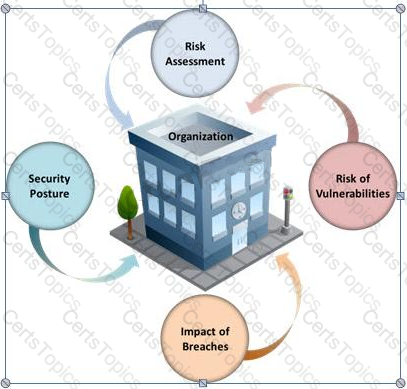
What is the formula to calculate risk?
You work as an IT security auditor hired by a law firm in Boston. You have been assigned the responsibility to audit the client for security risks. When assessing the risk to the clients network, what step should you take first?
TCP/IP provides a broad range of communication protocols for the various applications on the network. The TCP/IP model has four layers with major protocols included within each layer. Which one of the following protocols is used to collect information from all the network devices?
Identify the type of firewall represented in the diagram below:
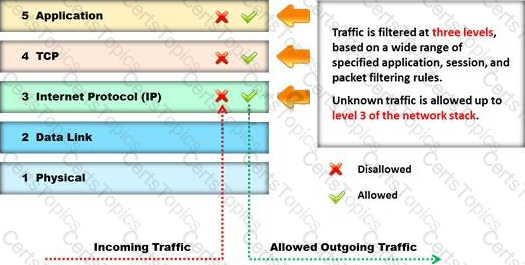
Choose the correct option to define the Prefix Length.

In the process of hacking a web application, attackers manipulate the HTTP requests to subvert the application authorization schemes by modifying input fields that relate to the user ID, username, access group, cost, file names, file identifiers, etc.
They first access the web application using a low privileged account and then escalate privileges to access protected resources. What attack has been carried out?
After passing her CEH exam, Carol wants to ensure that her network is completely secure. She implements a DMZ, statefull firewall, NAT, IPSEC, and a packet filtering firewall. Since all security measures were taken, none of the hosts on her network can reach the Internet.
Why is that?
Which of the following statements is true about Multi-Layer Intrusion Detection Systems (mIDSs)?
Which of the following is a framework of open standards developed by the Internet Engineering Task Force (IETF) that provides secure transmission of the sensitive data over an unprotected medium, such as the Internet?
You work as a penetration tester for Hammond Security Consultants. You are currently working on a contract for the state government of California. Your next step is to initiate a DoS attack on their network. Why would you want to initiate a DoS attack on a system you are testing?
Which one of the following acts related to the information security in the US fix the responsibility of management for establishing and maintaining an adequate internal control structure and procedures for financial reporting?
DNS information records provide important data about:
In a virtual test environment, Michael is testing the strength and security of BGP using multiple routers to mimic the backbone of the Internet. This project will help him write his doctoral thesis on "bringing down the Internet".
Without sniffing the traffic between the routers, Michael sends millions of RESET packets to the routers in an attempt to shut one or all of them down. After a few hours, one of the routers finally shuts itself down.
What will the other routers communicate between themselves?
Which of the following is NOT related to the Internal Security Assessment penetration testing strategy?